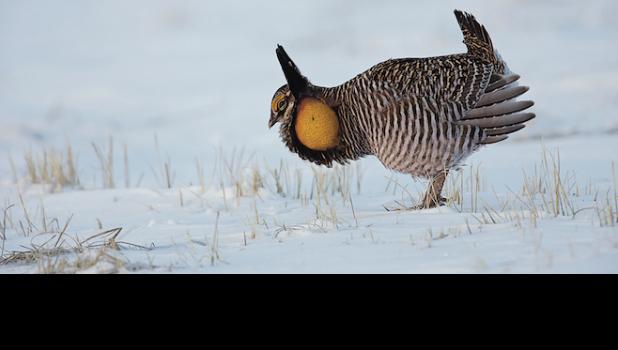The Outdoor Journal: Prairie Chickens
It's probably been 20 years ago now, but I remember the only time I ever saw a Prairie Chicken in the wild in DeKalb County. It was late in the day during the firearms deer season. I was working an area in the northeast part of DeKalb county just west of the Daviess county line. Just at sunset the birds came flying in from the northwest and sailed past me on into Daviess county. They were most likely birds from the flock that occupied the Dunn Ranch to the north in Harrison County. It was neat to see. It won't likely be seen again in our part of the state. Prairie Chickens continue to hang on on the Nature Conservancies Dunn Ranch, but grasslands through out most of Missouri continue to be converted to row crops, spelling the eventual demise of the birds here.
I was reminded of seeing the prairie chickens when I read a page in Wallace Thompson's book, A Farmer's Life. He described how birds would regularly fly onto their farm from the “prairie” to feed in their corn shocks. His place was in central DeKalb county and he would have been seeing these birds about 1910 or so. (By 1932, the eastern relative of the Greater Prairie Chicken, the Heath Hen was extinct. It populated the eastern sea board and was lost before the modern conservation movement could save it.)
Cornels's All about birds site says, “Few performances in the bird world are more memorable than the dawn display of Greater Prairie-Chickens at their booming ground, or lek—the traditional spot where males dance, call, and try to impress females with their vigor. When displaying, the males erect earlike plumes on the head and blow up bright orange air sacs on the neck, transforming themselves from brownish chickenlike birds into brightly colored performers, all the while drumming with their feet and producing whooping and cackling calls.” Native American dancer’s imitate this dance to this day.
Greater Prairie-Chicken numbers declined severely in the nineteenth and early twentieth centuries, but they have been stable during the period 1966 to 2015, according to the North American Breeding Bird Survey. The populations still exist in central Kansas, Nebraska and the Dakota's

